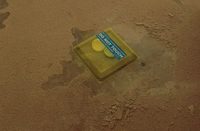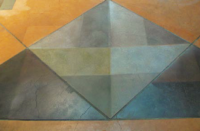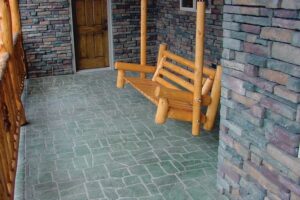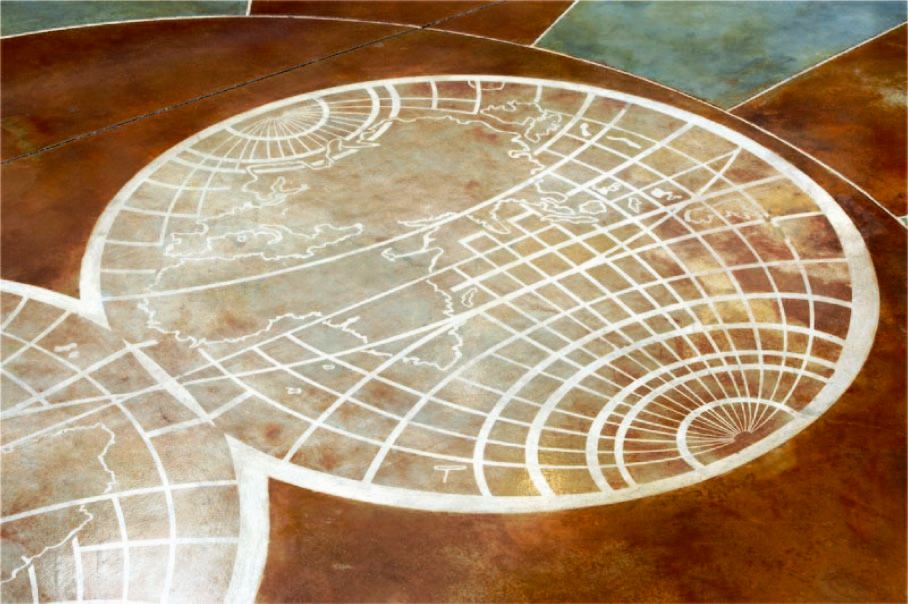
Stenciling on concrete opens the door to a world of design options that personalize and enhance a decorative concrete project.
The results can be simple or complex depending on the design you are seeking. You can use stencils to create tile or stone patterns, corporate and company logos, and unique works of art.
So where do you start? There are a few different types of stencils for creating your pattern, and lots of techniques and products.

The most common use of stencils has been for creating tile, brick and stone patterns with the use of concrete overlays. The process is: Apply the first coat in your grout color, then when that coat is dry, lay out your stencil pattern.
Stencils for this application are vinyl with or without a sticky adhesive backing. Most applicators will likely use ones with adhesive backing, augmented with additional adhesive from a sticky putty placed randomly in little balls to help keep the stencil flat.
Once the stencil is down, apply the second coat with your finish color. For instance, spraying a reddish mix for a brick color. You can spray accents of blacks or grays on top to create a more authentic brick color.
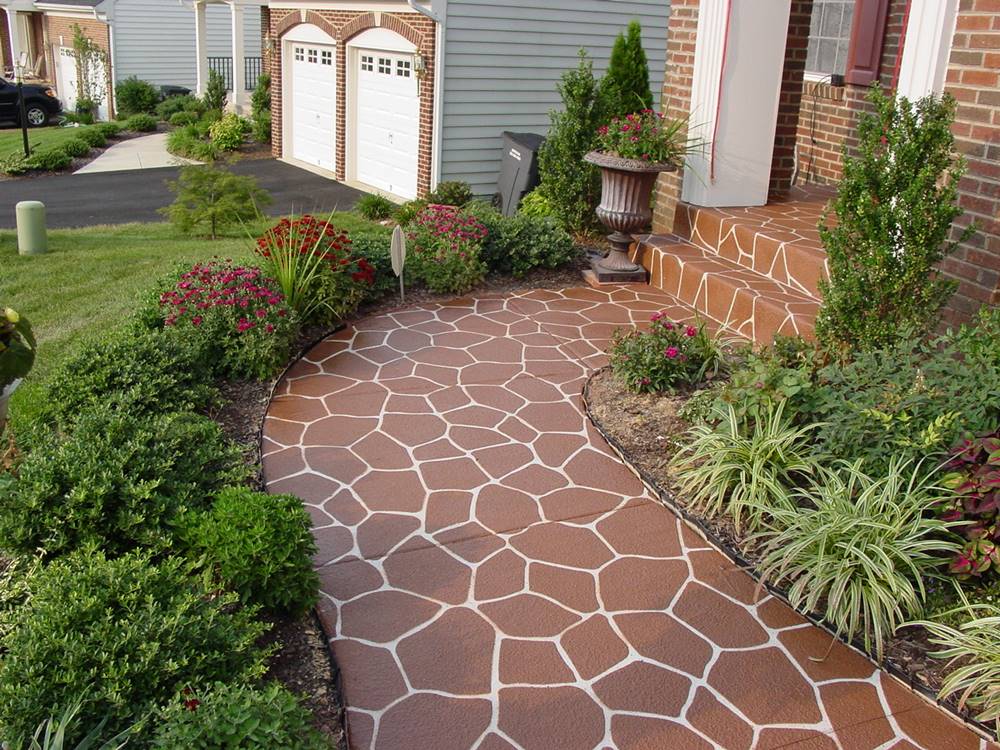
You can also use fiber or strapping tape to create your design. Fiber and strapping tape will not tear when pulled up to expose your pattern. The benefit of using fiber tape is that you can create numerous textures without the risk of bleeding under the stenciled pattern. You can use a trowel, squeegee, broom or any tool to create texture or to work in additional colors.
When you’re looking to create logos or highly decorative custom designs, you can work with Flattoos, created by Surface Gel Tek LLC. Flattoos are not just custom stencils, but a system for making designs with stains and dyes.
Flattoos are excellent for creating accents, borders and logos. You can use them for vertical wall applications and horizontal floors. You can apply them on ceilings if you have the patience.
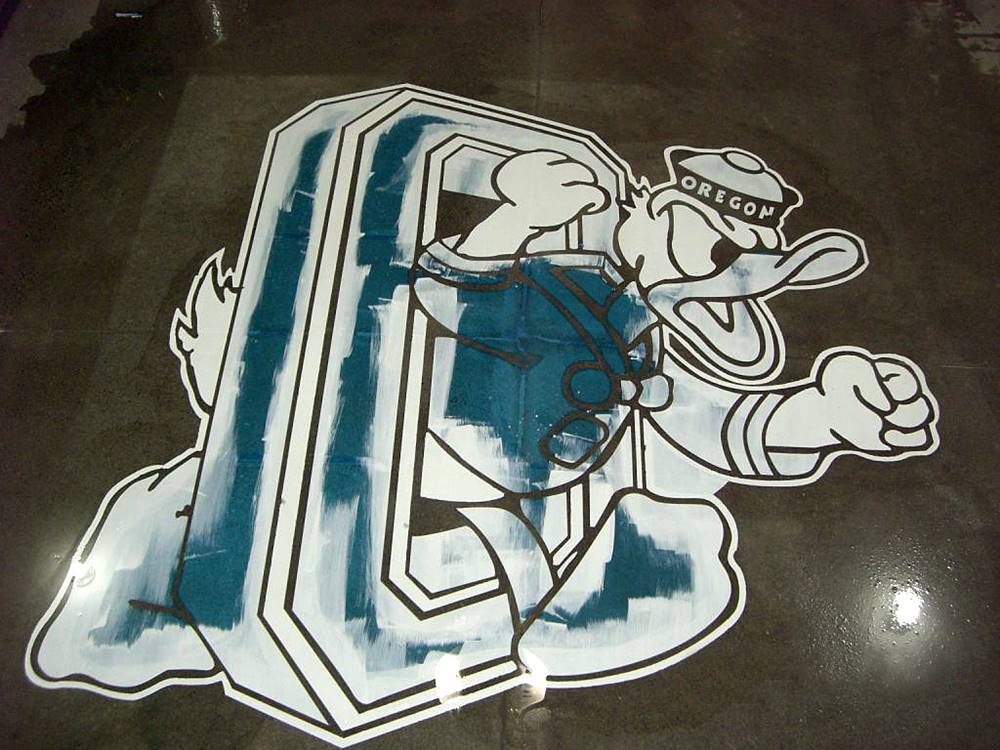
Vinyl and paper stencils won’t get flat enough to prevent stains and dyes from bleeding under them. When you work with Flattoos, you can use Surface Gel Tek’s gelled acid to apply color without it bleeding under the Flattoo stencil. If you are working with acid stains, using the gelled acid to pull the stain out of the floor is a great option. You can completely remove the stain from within the Flattoo, enabling you to apply custom colors.
There are a few more options when working with stencils. Artcrete Inc. has a stencil systemyou can use on freshly poured concrete, then roll and float it in. They have textured rollers that create a result that looks like stamped concrete. Then, broadcast color hardener over the surface. When you pull the stencil up, the result has a natural look with grout lines.
Engrave-A-Crete Inc., another innovator in the decorative concrete market, has a plastic stencil system that works with their engraving tools.
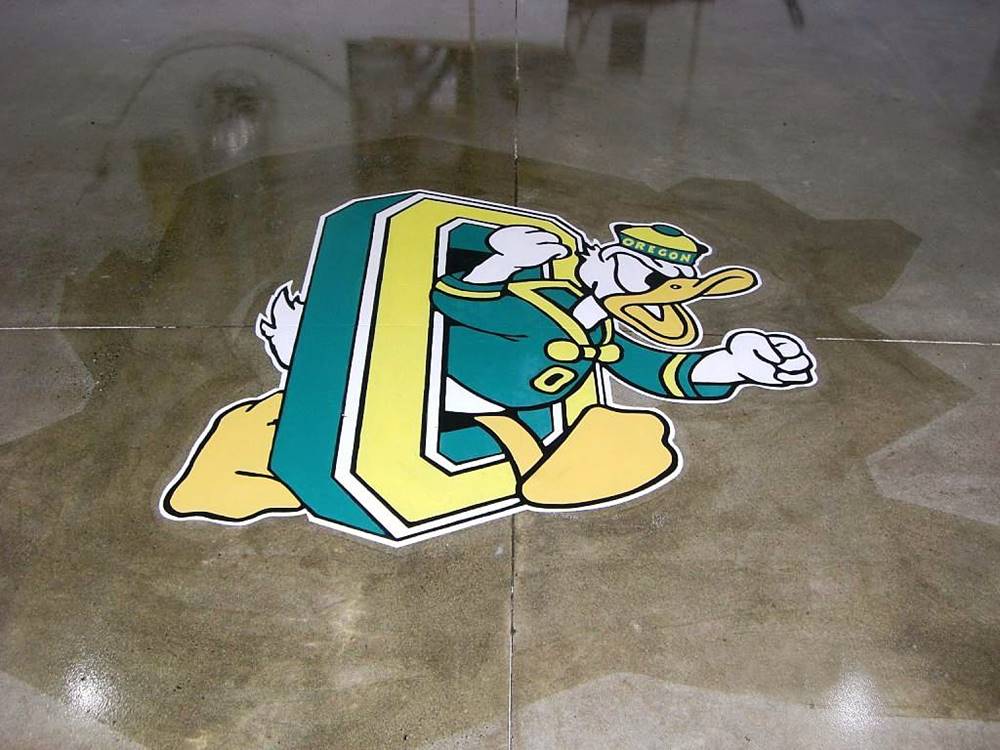
It’s important to understand with stenciling that just because you can, doesn’t mean you should. Stenciling is a great asset when designing and enhancing concrete, but like with any property improvement, design requires proper balance. Proper design choices and application will add value to a property. In the end that’s really what it’s all about.
Shopping for Stenciled Concrete?
Offered by Concrete Decor Store C107 - Flattoo Stencil System - Center Medallion
C107 - Flattoo Stencil System - Center Medallion
by Surface Gel Tek Flagstone - Concrete Stencil Roll
Flagstone - Concrete Stencil Roll
by Decorative Concrete Impressions

